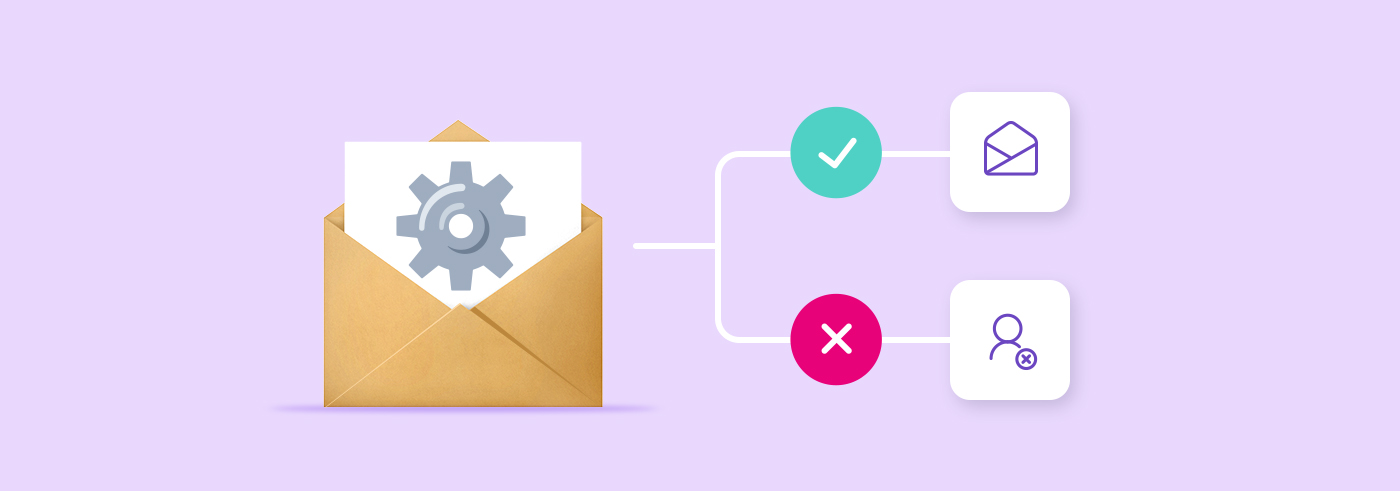When it comes to promoting a positive ROI, no digital marketing channel compares to the power of email marketing.
From being able to diversify your approach by audience segment to having the privilege of engaging in ongoing communication with your ideal customer, email marketing can help you get up close and personal with the people you want to speak to most. And when orchestrated strategically, the costs are minimal, and the profits are impressive.
That’s why it’s essential to understand how email marketing ROI works and how to use the data it offers to your advantage.
Luckily, we’re here to help with that.
Table of Contents
- What is Return on Investment (ROI)?
- How to Calculate Email Marketing ROI
- Factors That Impact Your Email ROI
- 5 Simple Ways to Improve Email Marketing ROI
- Bonus Tip
- Key Takeaways
In today’s guide, we’ll discuss what return on investment (ROI) really means, the factors that impact it, and how to calculate it for your email marketing efforts. We’ll also share five simple ways you can improve your email marketing ROI.
Ready to learn more?
Let’s get started.
What is Return on Investment (ROI)?
Return on Investment (ROI) refers to the amount of money you earn from investing in something compared to how much money you spent on it, reflected in a percentage.
The traditional formula looks like this:
Net income / Cost of investment x 100 = ROI
For instance, if you invested $100 on a pair of sneakers and sold them for $300, your ROI would be $200, or 200%. We’ll share the specific email marketing ROI formula in the next section.
Email marketers pay attention to ROI because it helps them measure the effectiveness of their email marketing campaigns.
By examining key performance indicators (KPIs) like conversion rates, clickthroughs, and unsubscribe rates, among other email data, marketers can apply valuable insights to refine their approach and improve their conversions.
How to Calculate Email Marketing ROI
To calculate email marketing ROI, you can use an email marketing ROI calculator or calculate it manually using the following simple formula:
(Total revenue from email - Total email costs) / Total email costs x 100 = ROI
For example, if you generated $80,000 in email marketing revenue and had $8,000 in expenses, that’d be $72,000 in profit. Divide that by the $8,000 in costs, and you get $9. Multiply that by 100, and you get a 900% email marketing ROI.
Here’s how the math looks:
(80,000 - 8,000) / 8,000 x 100 = 900%
To obtain these figures, you’ll need to determine your email campaign’s gained and spent value. Gained value refers to the revenue you earned from the campaign. Spent value refers to how much you paid to create the campaign and any related email service provider costs.
You can also calculate the ROI of your previous campaigns and then average them out to determine your average ROI.
Factors That Impact Your Email ROI
You’ve worked hard to earn your email subscribers and build a lead list in the process, but that doesn’t mean they’ll always engage with your content and take you up on your offers.
Some factors that can impact your email ROI, include:
- The industry you’re in
- The size of your email list
- The number of verified email addresses
- The number of email campaigns you send per month
- The time of year
- Poor (or no) email segmentation
- Low-value content
- Content that’s not personalized to your audience’s core needs and pain points
For instance, if you’re in the pest control industry, you may learn that B2C email subscribers may not want information on pest control topics or products all year long. Your B2B subscribers, on the other hand, may be very interested in all things pests, no matter what time of year it is.
You can use these insights to your advantage to lower campaign costs and increase your ROI. Simply segment your audience and focus on sending seasonal-only content to your B2C prospects (for instance, during Spring and Summer when pests are high) and ongoing content to your B2B leads. We’ll touch more on list segmentation in a bit.
Utilizing an email assistant can also benefit your email marketing ROI through optimized campaigns and strategic insights. Developing a robust scoring model is another key approach to enhancing email marketing ROI.
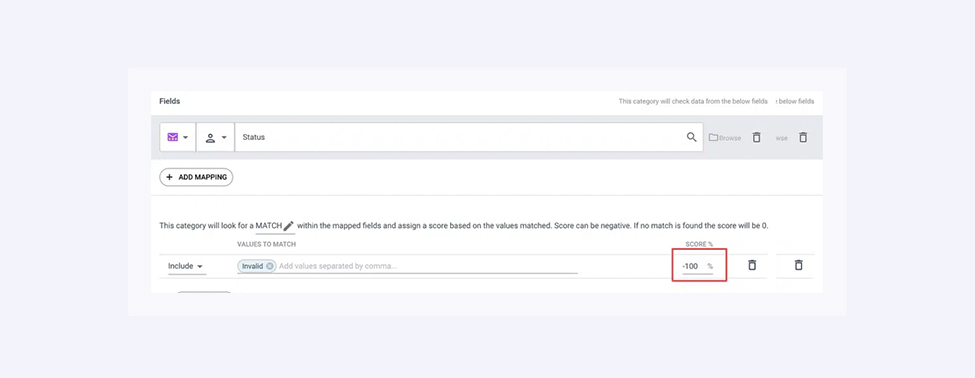
By implementing a lead model, you can better identify and prioritize leads that are more likely to convert into customers. This is an effective way to prevent spending valuable marketing dollars on low-value leads that don’t have a high promise of converting — so you can invest in high-value leads that do.
5 Simple Ways to Improve Email Marketing ROI
Now that you’re clear on the basics, let’s take a look at five simple ways you can improve your email marketing ROI.
1. Set Specific, Measurable Goals for Your Campaigns
Calculate your ROI more accurately by setting specific and measurable email marketing goals for your campaigns. In addition, use goal-tracking tools to measure your progress and share updates as the campaign is rolling out.
For instance, you might decide to start a campaign to raise brand awareness, grow your email list, nurture leads, increase sales and revenue, or boost website traffic.
Get laser-specific by listing the exact goal, why it’s important, and how you plan on measuring it. Attach visuals if possible.
Here’s an example:
“We’d like to test the following email newsletter pop-up opt-in form and CTA button on our Fort Lauderdale florist website to see which lead magnet drives more email subscribers that convert into customers.
This goal is important to us as we look to grow our email list with as many qualified leads as possible. We’ll be measuring this goal by monitoring campaign and email service provider costs, and comparing them against the net profit we earn from each audience segment.”
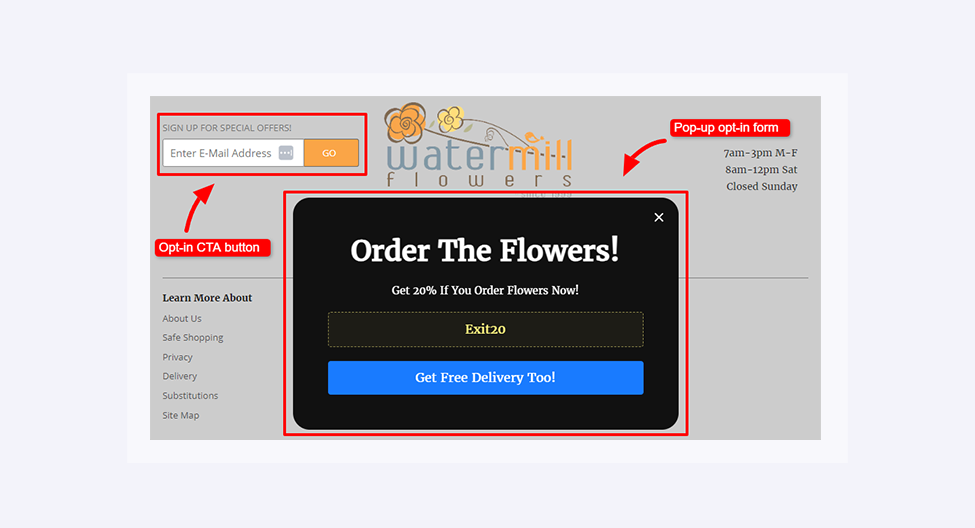
2. Create Buyer Personas to Reach Your Target Audience
Send promotional emails that convert by leading with strong buyer personas that refine your target customers and address their pain points.
Basing your email content on your personas is absolutely critical to encouraging higher open rates, crafting personalized content, and solving your audience’s core problems. Otherwise, you risk sending content and offers your audience doesn’t need or find valuable.
Continue updating your personas as you monitor your email marketing campaigns and see what’s working and what’s not. Be sure to also apply the insights you uncover to improve your email marketing strategy and promote higher conversions.
3. Write Compelling Email Subject Lines
Captivate your email list subscribers by writing compelling subject lines that spark curiosity and incorporate urgency.
The trick? Don’t sensationalize or overpromise something. Audiences don’t appreciate this kind of language, and your emails may be flagged as spam.
Stay authentic by writing subject lines that:
- Are personalized to each audience segment
- Immediately express the value recipients will be walking away with
- Portray how you’ll solve your audience’s problems and cater to their interests
Following these three simple copywriting tips can help you spark engagement and help your ideal customer feel seen and understood.
Here’s an example of three subject lines that tick all of the above boxes for inspiration:

Let’s quickly review why these work:
- “I need to tell you this, Ioana”: Immediately evokes a sense of curiosity and is tailored to the specific recipient.
- “How these women got back into fat-burning mode FAST!”: Goes straight into the exact value the recipient will walk away with and incorporates urgency.
- “B2B or B2C? Which is better in 2023?”: Sparks curiosity and covers a topic specific to the recipient’s interests and pain points.
4. Personalize Emails by Automating Workflows
Use email marketing software to send automated, segmented emails to your audience.
To understand how to best segment your lists, start by using dynamic content — think interactive polls and quizzes — and saving personalized product recommendations for each audience segment.
For instance, if you own a skincare line, send a skincare quiz and use your recipients' answers to recommend tailored products later. Or, if you own a SaaS app like an EMR Software , send over a questionnaire and use the responses you receive to present custom pricing plans in your future campaigns.
Next, segment your lists based on demographics, interests, and behavior to increase your click-through rates and conversions. Introduce automation workflows to streamline and personalize your campaigns — you’ll use these to send the tailored offers you noted above to your audience segments.
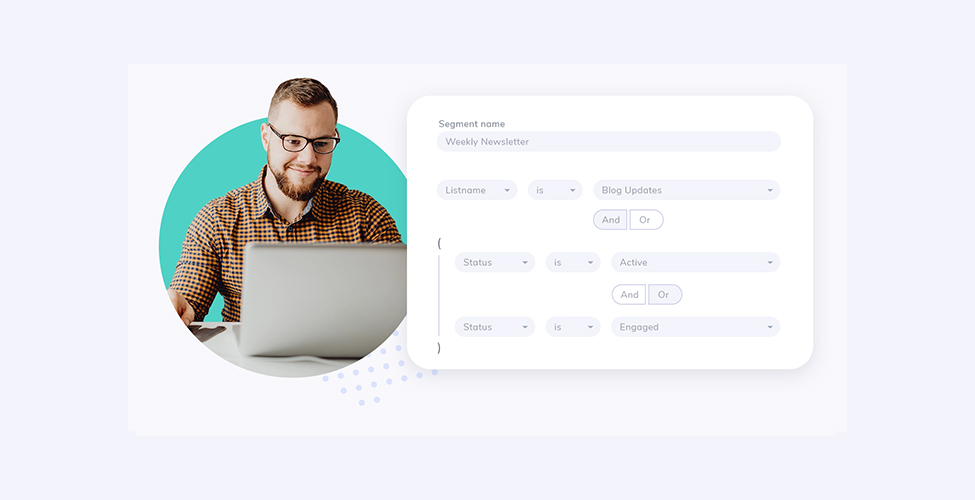
If you cater to diverse audience segments that prefer different messaging styles, or if you serve a global audience, consider using a free AI writer to vary your tone, messaging, and language for each group. For instance, with Simplified AI, you can generate copy in over 10 tones and 30 languages to reach broader audiences.
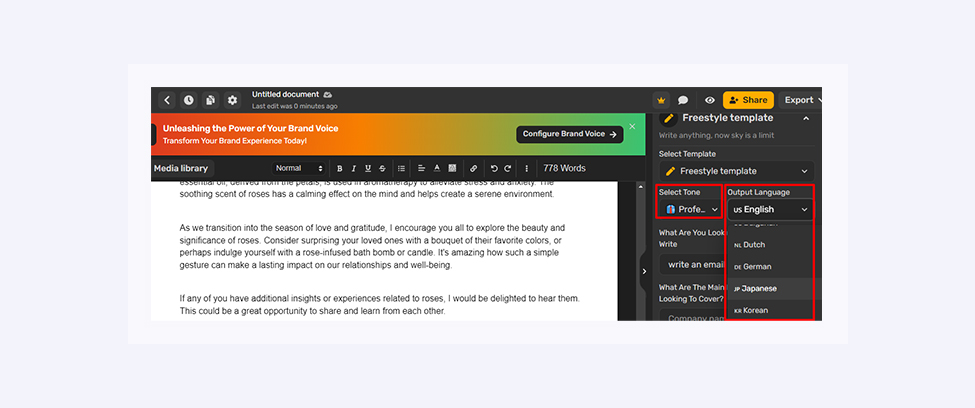
To automate your email marketing workflows, try Elastic Email. With our platform, you can collect leads and subscribers, create beautiful newsletters, set up campaigns, and smoothly automate them for the best ROI possible.
5. Test Different Variations to Find What Works
Whether you’re sending abandoned cart emails, email newsletters, or promotional emails, always test your campaigns (by sending out a small batch of varied emails) before going live.
A simple way to do so is by using A/B testing or “split testing” to determine what types of messaging and offerings work best for each audience segment. Then, optimize your content and campaigns accordingly.
For instance, with Elastic Email you can test two or more variants of your content, images, layouts, subject lines, (and more) to find the perfect match for your audience segments.
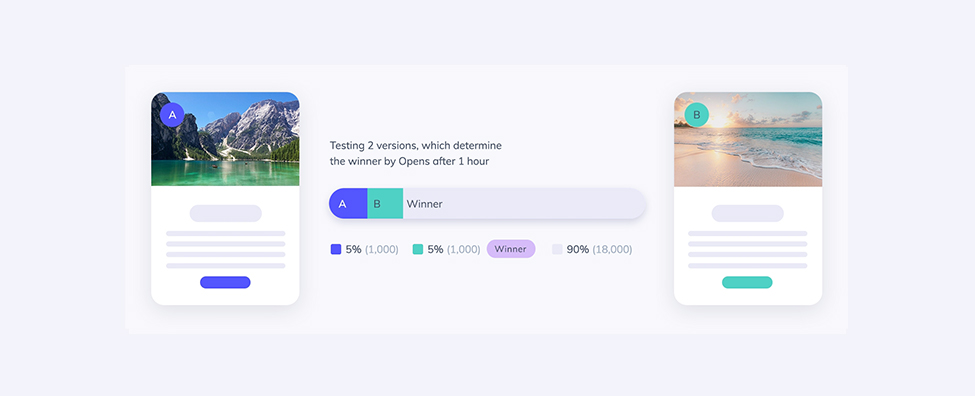
Our system will then send out a small batch of emails, decide which variant performs better, and automatically send that version out to the rest of your list!
*Note: This goes without saying, but don’t forget to optimize your content for mobile devices. An easy trick? Use responsive email templates. These automatically generate the correct image and content sizes depending on the screens they’re viewed on.
Bonus Tip
Another way to boost your business's ROI is by exploring additional revenue streams. One opportunity worth exploring is offering complementary services such as web hosting as an add-on to your offering. Cost effective options like reseller hosting can provide a lucrative avenue for businesses to generate passive income, which can then be used to help fund and streamline your email marketing efforts.
With reseller hosting, you can leverage a reliable hosting platform to sell hosting packages under your own brand, while benefiting from scalable resources and determining your own profit margins. Add-on services like this can help businesses set up and manage hosting solutions efficiently, creating a steady stream of passive income without significant ongoing effort from your side. This additional revenue can be reinvested into your email marketing strategy, helping to increase available budgets for tools, campaigns and customer acquisition efforts - ultimately improving your overall ROI.
Key Takeaways
And there you have it.
Today, we discussed all things email marketing ROI and five simple ways to improve it, including:
- Setting specific, measurable goals for your campaigns
- Creating buyer personas to reach your target audience
- Writing compelling subject lines
- Personalizing emails by automating workflows
- Testing different variations to find what works
Are you ready to boost your email marketing ROI?
Don’t forget to bookmark this article and share it with your marketing team. And if you’re interested in taking your email marketing and email delivery to the next level, try Elastic Email.
Our powerful multi-product platform was built to help you grow your business using top-notch email marketing software. Trusted by developers and loved by marketers, you’re in good hands with Elastic Email — try it for free today! ☑️





